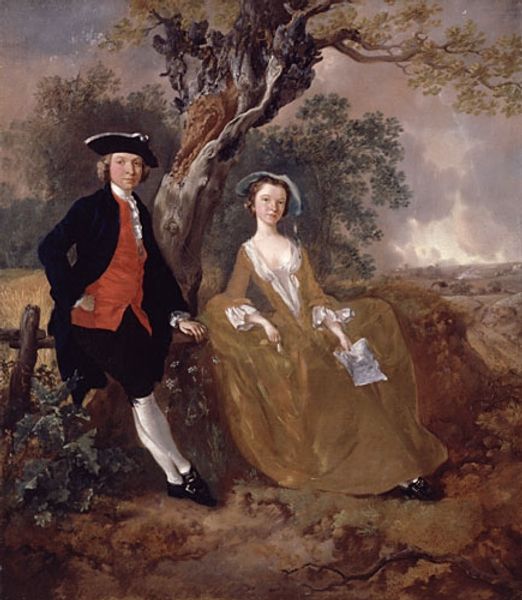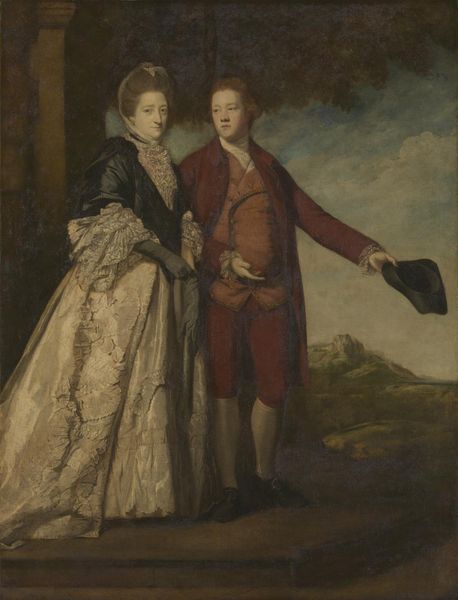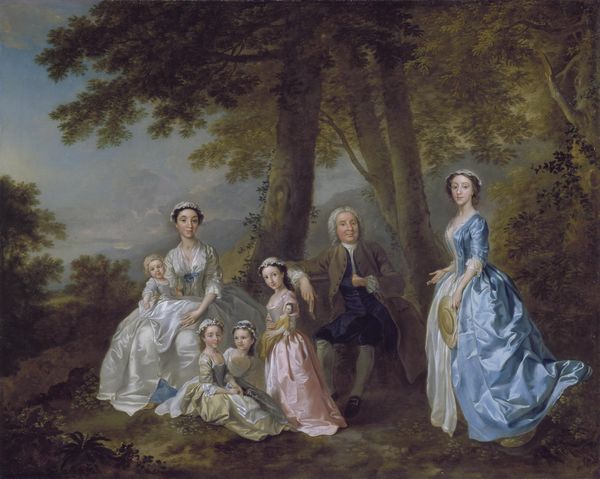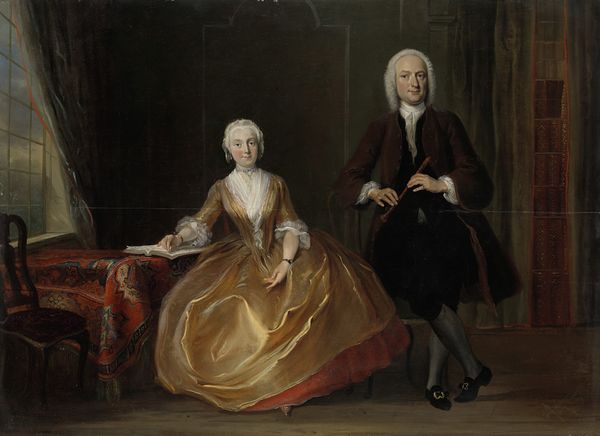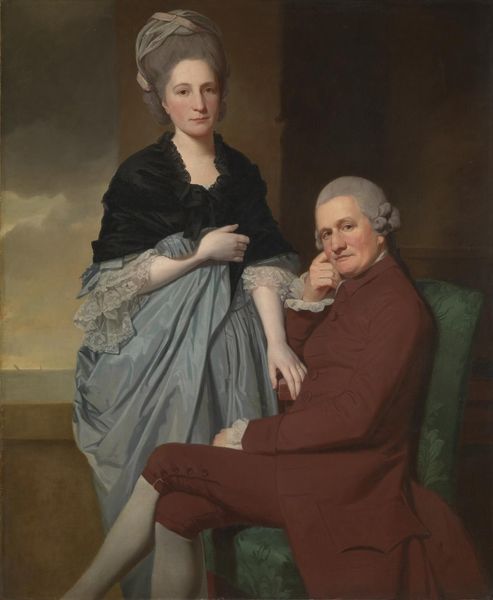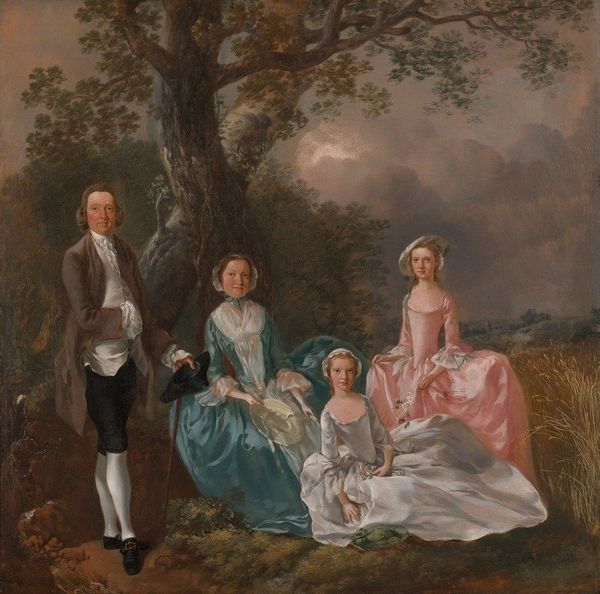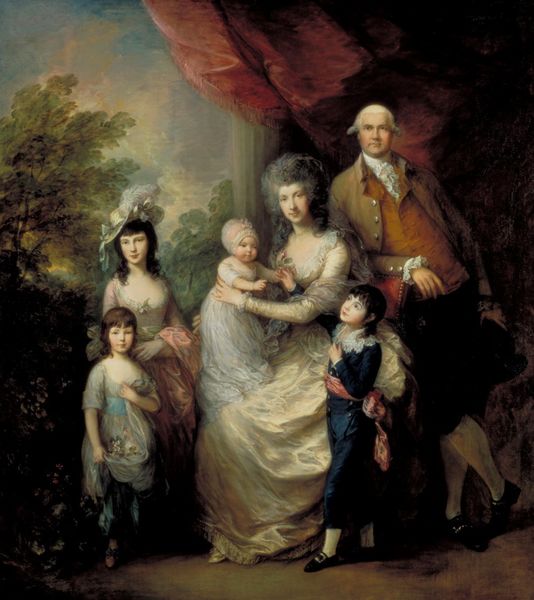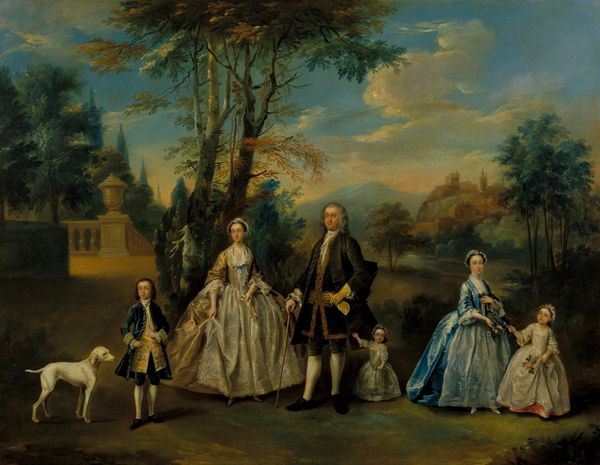
Portrait of Sarah Kirby (née Bull) and John Joshua Kirby 1752
0:00
0:00
thomasgainsborough
National Portrait Gallery, London, UK
oil-paint
#
portrait
#
oil-paint
#
oil painting
#
group-portraits
#
genre-painting
#
rococo
Dimensions: 76.8 x 63.7 cm
Copyright: Public domain
Curator: Here we have Thomas Gainsborough's "Portrait of Sarah Kirby (née Bull) and John Joshua Kirby" painted in 1752. It's an oil on canvas, and an early work in his career, capturing a couple nestled within a shadowy woodland setting. Editor: My first thought is 'unease' despite the bucolic scene. There's something almost theatrical in their stillness and the darkness surrounding them. Is it just me, or is it rather… foreboding? Curator: I can see that. There is an almost stage-like composition. Gainsborough's portraits often had that 'deliberately posed' feel, though it changed over time as he honed his abilities to better reveal people’s innate spirit. Early on he seems preoccupied with placing his sitters firmly within their context and, in this case, suggesting their societal roles. Editor: Absolutely, the setting certainly gives a romantic framing of the sitters, drawing parallels to older tropes within Renaissance painting, like those often associated with depictions of Venus, for example. Even the way that Sarah is dressed in soft draping is similar. Look at how the material softly envelops her, symbolizing perhaps not only their wealth, but something a bit more. What do you make of it? Curator: I am glad that you pointed this out because the cool blue fabric in contrast with her face makes a soft ethereal impression on the viewer. Then on the other hand her husbands outfit stands in stark opposition to her soft curves with very sharp edges that give the viewer an impression of cold resolve. These contrasts really draw attention to Gainsborough's intention of representing their individuality, I think. Editor: A rather apt analysis. Speaking of edges, that little dog over there practically vanishes into the undergrowth. Notice how the spotted coat blends almost seamlessly. To me, it feels more like an emblem than a pet. The dog frequently signals fidelity, wouldn’t you agree? A marker of domestic stability in the visual rhetoric of the time. Curator: Ah, yes, very astute observation! Its visual weight within the composition is nearly insignificant. Which feels entirely deliberate on Gainsborough's part given it could have been much more prominent. All of which helps convey the psychological insight he wished to project. Editor: Well, looking at it from a historical perspective then, the artist and the art critic almost appear as carefully positioned symbols within their own domestic drama. A fitting conclusion I’d venture. Curator: A marvelous way to look at it. Gainsborough gives us the chance to pause, look inward, and think critically not just about representation, but about how meaning and the personal combine through time.
Comments
No comments
Be the first to comment and join the conversation on the ultimate creative platform.

